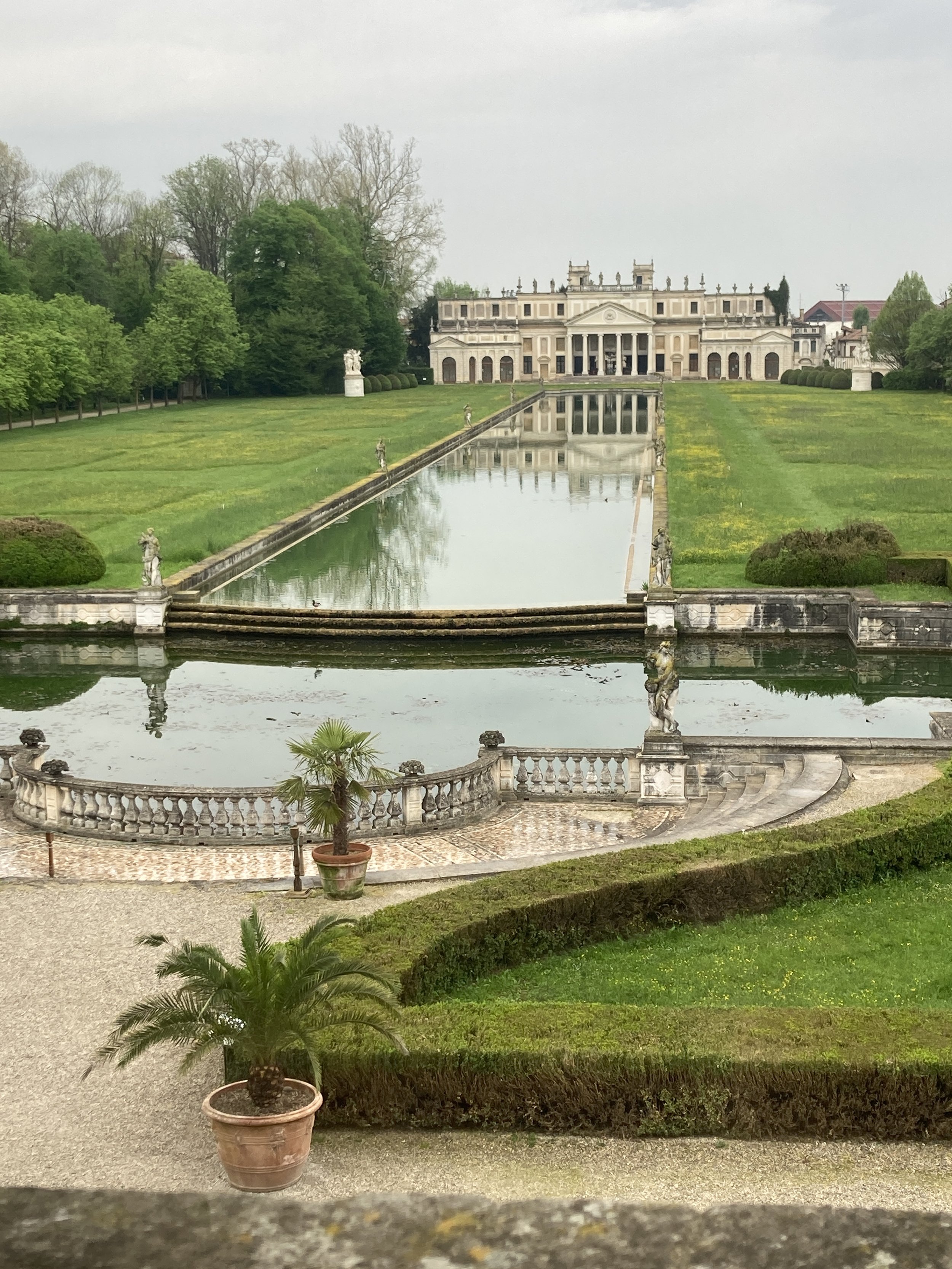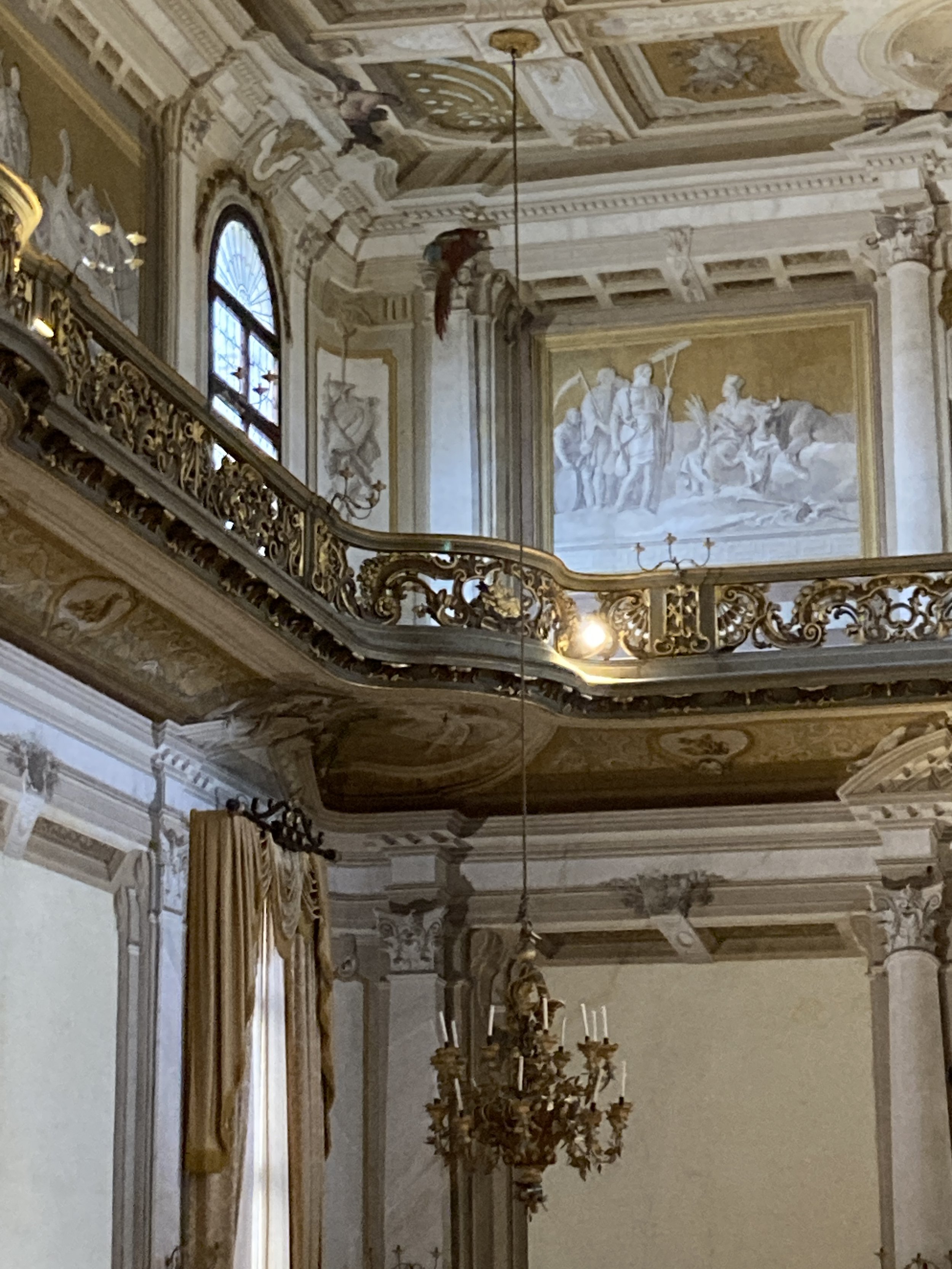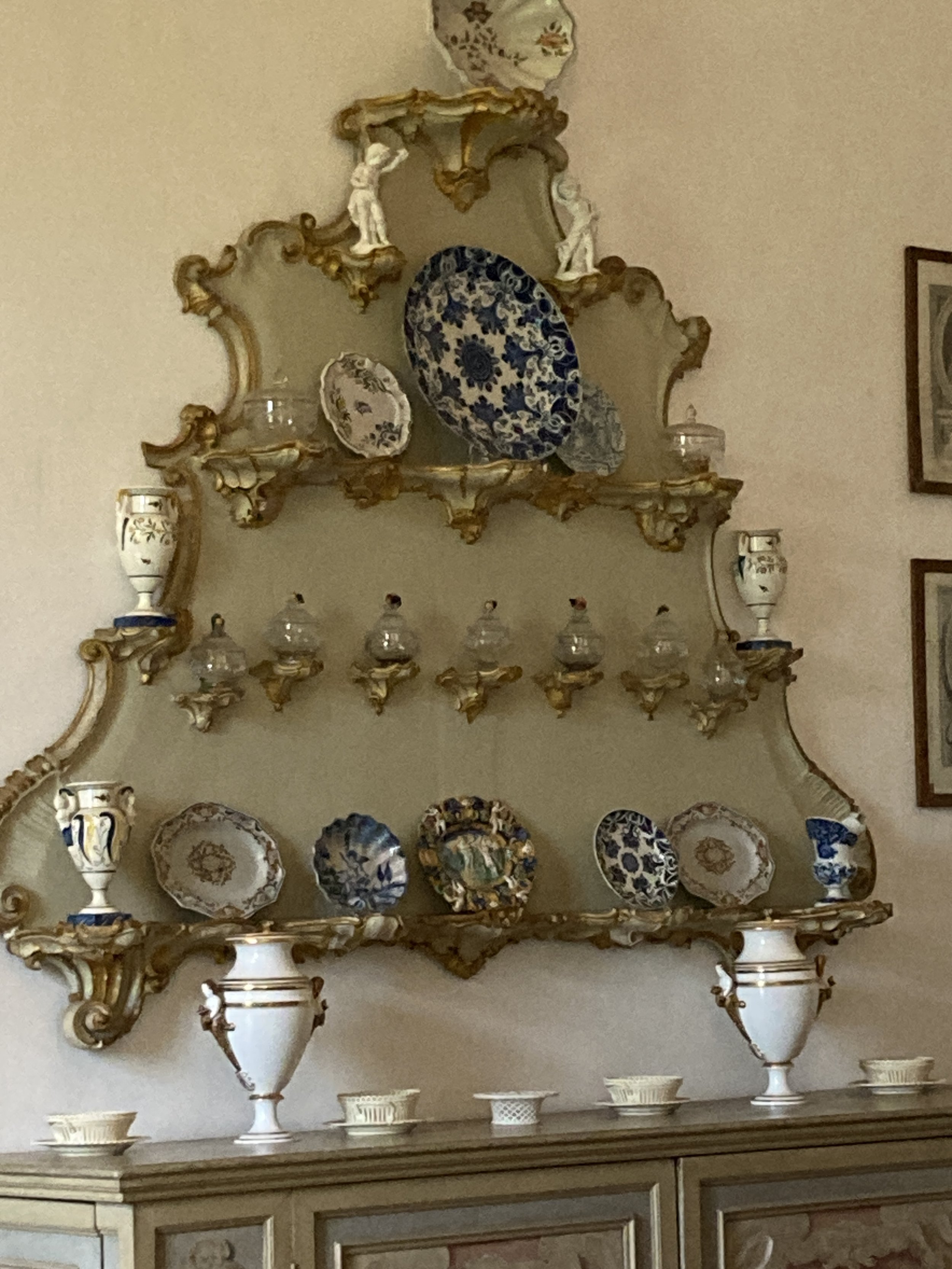Brenta Canal Part Two: The Villa Pisani
The Villas along the Brenta Canal were built between the 16th and 18th century. Some were built for agriculture and commerce but many as summer getaways for rich and powerful Venetians. They lined the canal between Venice and the city of Padova, forming an extension of Venice that became known as the “Brenta Riviera”.
A beautifully decorated hallway in Villa Pisani
The front entrance to Villa Pisani
The villas were designed to impress. Their ornate trimmings, art filled halls, grand ballrooms, and sweeping gardens played host to Doges, Popes, Kings, Emperors, artists and wealthy merchants during the height of the Venetian Empire. After the fall of Venice, in 1797, with the arrival of Napoleon, many of the villas changed hands, often due to the financial problems of the owners.
Today some villas are in disrepair (imagine the costs of upkeep!), some are abandoned, some have been converted into museums, restaurants or hotels. Others are privately owned. A few of the most spectacular ones are open to the public.
The villas can easily be visited by car, but a more elegant (though much slower) way to tour the villas is to arrive by burchiello – a modern version of the historic boats that once moved people and goods along the canal. That is exactly what a group of friends and I did recently. The boat trip from Padua to Venice took about 9 hours, with stops at 3 villas along the way. The visits included a guide who shared the history of each villa, details about the art and architecture, and some good 16th – 18th century gossip about villa life.
The first villa on the itinerary was Villa Pisani. Built to celebrate the election of Alvise Pisani as the 114th Doge of Venice, the villa is the crown jewel of the Brenta Riviera. The Pisani family owned the villa until it was sold to Napoleon in 1808.
The villa is remarkable in many ways. First, its size. The place is massive! The 144 rooms are said to represent the number of Venetian Doges up to Pisani. One room is filled with wall mounted sculptures of the head of each doge. Look carefully on the wall to the right to find the likeness of Alvise Pisani.
The Pisani’s must have loved to entertain, because their ballroom is nothing short of spectacular. The room shimmers with gold trimmings. High above is an ornate balcony which rings the room – a place for the musicians to play. And the ceiling! The ceiling fresco is by Tiepolo and it is a marvel. The ballroom is the truly the elegant heart of the villa. Standing here you can almost hear the music playing and can imagine the finely clothed Venetians enjoy a luxurious party.
The visit to the villa includes the piano nobile where a series of rooms are filled with history. There is the bedroom where King Vittorio Emanuele II slept (left below). Next door, the room of his second wife, the Contessa di Mirafiori, with a reproduction of one of her dresses (right).
The room dedicated to music and the elegant sala di pranzo (dining room) face out onto the immaculate grounds and the stable (shown below at the end of the reflecting pool and looking very much like another villa).
Napoleon only spent one night here, but he left the villa in the hands of his stepson, Eugene de Beauharnais, Viceroy of Italy. The Viceroy lived there with his wife, adding fireplaces for heating (most of the Brenta Villas were not heated as they were intended to be summer homes), and creating a chapel, a study and a games room. The study is where a later historic meeting between Mussolini and Hitler took place prior to World War II.
A peak at the grounds outside the villa. I’ll need a return visit to explore the gardens!
The grounds are equally impressive. The 30 acres contain a large reflecting pool, stables, an orangery, ice house, and a labyrinth.
Is it true that Napoleon got lost in the labyrinth? It is said that he did but, to use the Italian phrase, chissà (who knows)?
The only drawback to our guided visit is that we did not have any time in the gardens. I will need to go back and wander those beautiful spaces.
Today the Villa and surrounding park is a National Museum.
The Villa is open from 31 March to 30 September this year, 9 am – 8pm (last admission 1 hour before closing), closed on Mondays. The labyrinth is currently closed for restoration.
Coming soon – Part 3, Villa Widmann
Website: villapisani.beniculturali.it
Email: info@museovillapisani.it
Cost €12 villa + park, €6 park only



















